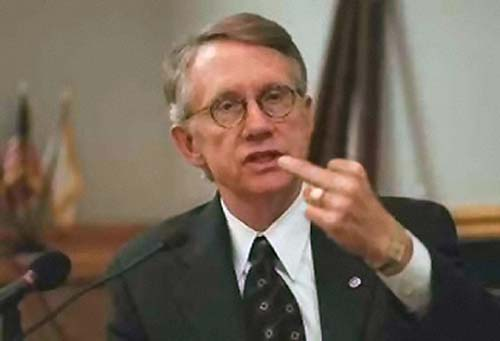
Let’s take a quick look at numbers behind the Senate health care bill introduced by Senate Majority Leader Harry Reid.
Reid claims his bill will cover 94 percent of the population at a cost of $849 billion over 10 years.
The population of the country is roughly 300 million.
At this point you need to understand one thing – there are two vastly different numbers used for the uninsured. The first number consists of all the people uninsured at some point in a given year, whether they are citizens or here illegally. The second number is the chronically uninsured, those who have spent an extended period of time (years) without insurance. The number for the former, the one I like to call the “kitchen sink” number, is one with which you are undoubtedly familiar: 47-49 million. The number for the latter, the chronically uninsured, is one you may not have heard before: 12-15 million.
How these differing numbers come to be is a story for another day, but let’s analyze both of them for the sake of argument.
Accepting Reid’s statements at face value, his plan will cover 94 percent of the 300 million US population, or 282 million Americans.
Currently, using the chronically uninsured number, there are 285-288 million Americans with health insurance. Using Reid’s own estimate, his plan would mean between 3 and 6 million more people with health insurance.
Using the larger kitchen sink number, Reid’s plan would cover roughly 30 million more people than are covered right now. But at what cost?
Insuring 30 million people at a 10 year cost of $849 billion would mean a per person cost of $28,300. Over 10 years that would be $2,830 a year, but this isn’t a 10 year plan. The bill before the Senate doesn’t take effect until 2013, well after the next Presidential election. And while the Congressional Budget Office score covers the years 2010 through 2019, only in the years 2013-2019 is anyone actually insured. So we’re looking at a window of 7 years, which give us an average cost of $4042.85 per person, per year people are actually being insured. The average person could find a cheaper health insurance plan.
However, if we assume all the money numbers are correct and the government is ready to spend $4042 per person, per year to cover just the chronically uninsured, and we multiply that number by the 12-15 million chronically uninsured, this plan would only cost between $339 billion to $424 billion, less than half the price of the Reid bill.
Since we can see there is a huge discrepancy between what they’ve said they want to do (help people get insurance) and what they’ve actually proposed (massively expand government at a great cost to you and all future generations), do you think maybe Reid’s 2074 page health care “reform” bill might be about something more than simply insuring people? Might it be about control?
Just a thought.
*NOTE: Bear in mind that CBO cost estimates on health care have never been correct, 5 years after its inception Medicare ended up costing what CBO said it would cost in 25 years. And these are just basic math calculations that don’t take into account the massive bureaucracy that will eat up a large percentage of these costs while inserting itself in your medical decision. Anyway…
COMMENTS
Please let us know if you're having issues with commenting.